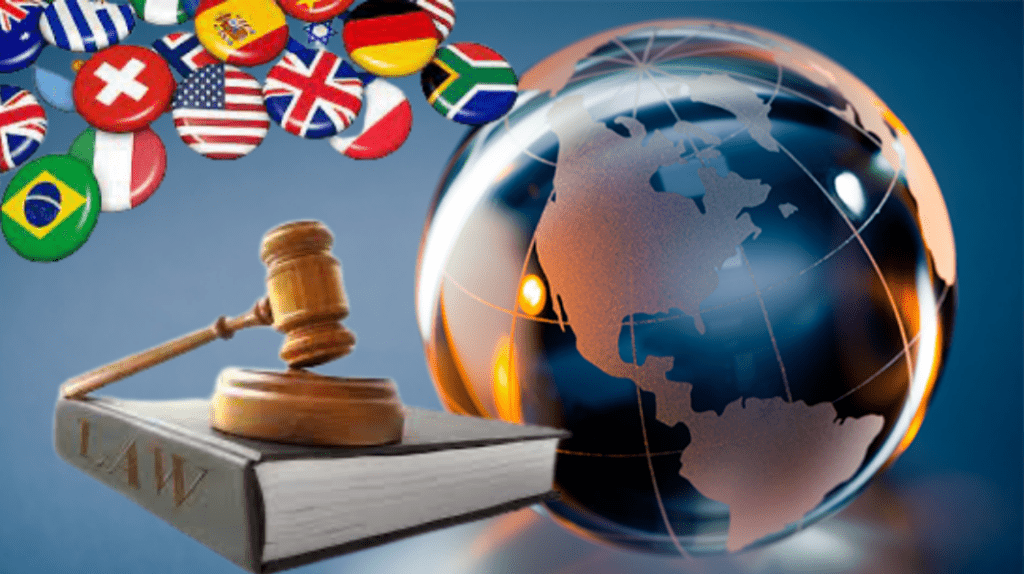What is International Law?
International law consists of legal principles and rules that regulate the relations and dealings between nations, as well as other actors in the international arena, such as international organizations and, in certain cases, individuals. Unlike domestic laws, which apply within the jurisdiction of a state, https://yesouisispace.com/ operates at a global level, and its primary aim is to promote peace, security, and cooperation among countries.
International law is divided into two main categories:
-
Public International Law: Governs the relationship between states and international organizations. It includes treaties, conventions, and other agreements that establish rules on issues such as war, human rights, and the environment.
-
Private International Law: Also known as conflict of laws, this deals with legal disputes between individuals or entities across different jurisdictions, such as cross-border commercial transactions or family matters involving citizens of different countries.
Sources of International Law
International law draws from several sources, the most important of which are:
1. International Treaties and Conventions
Treaties are formal, written agreements between states that are legally binding. They are one of the primary sources of international law. Treaties may be bilateral (between two countries) or multilateral (involving several countries). Examples of important international treaties include:
-
The United Nations Charter (establishing the UN and its various organs)
-
The Geneva Conventions (setting standards for humanitarian treatment during armed conflicts)
-
The Paris Agreement (on climate change)
2. Customary International Law
Customary international law refers to practices and norms that have evolved over time and are considered legally binding states, even if they have not been codified in written treaties. These customary practices arise from state behavior that is consistently followed a majority of countries and is accepted as law.
-
Examples: The prohibition of genocide, the concept of diplomatic immunity, and the principle of non-intervention in the internal affairs of sovereign states.
3. General Principles of Law
These are fundamental legal principles that are common across most legal systems and can be applied in international law. These principles serve as a foundation for understanding justice and fairness in the global context.
-
Examples: The principle of good faith in the performance of treaties, the prohibition of ex post facto laws, and the right to a fair trial.
4. Judicial Decisions and Legal Writings
Decisions international courts, such as the International Court of Justice (ICJ), and writings prominent legal scholars, contribute to the development and interpretation of international law. These sources help to clarify legal ambiguities and establish precedent for future cases.
-
Examples: Rulings from the International Court of Justice (ICJ) or the International Criminal Court (ICC).
Key Areas of International Law
International law covers a wide range of issues, with some of the key areas being:
1. Human Rights Law
Human rights law focuses on protecting the basic rights and freedoms of individuals worldwide. This branch of law seeks to safeguard rights such as the right to life, liberty, and freedom from torture or slavery. The Universal Declaration of Human Rights (UDHR) and various international treaties, like the International Covenant on Civil and Political Rights (ICCPR), are foundational to this area of law.
-
Example: The European Court of Human Rights (ECHR) is an important institution that adjudicates human rights cases in Europe.
2. International Humanitarian Law (IHL)
International humanitarian law, or the law of armed conflict, regulates the conduct of warfare and protects individuals who are not participating in hostilities, such as civilians, prisoners of war, and medical personnel. The Geneva Conventions are central to IHL, establishing rules for the protection of civilians and combatants in conflict zones.
-
Example: The prohibition of targeting civilians during warfare or the use of chemical weapons.
3. International Trade Law
International trade law governs the rules and regulations that countries must follow when engaging in international commerce. It covers everything from tariffs and trade barriers to intellectual property and dispute resolution between countries. The World Trade Organization (WTO) plays a significant role in regulating global trade.
-
Example: The General Agreement on Tariffs and Trade (GATT), which laid the foundation for the WTO.
4. Environmental Law
International environmental law seeks to address global environmental issues such as climate change, biodiversity loss, and pollution. Treaties like the Paris Agreement aim to reduce global greenhouse gas emissions and combat the impacts of climate change. This area of law emphasizes global cooperation in protecting the environment for future generations.
-
Example: The Kyoto Protocol, an international agreement that set targets for reducing greenhouse gas emissions.
5. Law of the Sea
The United Nations Convention on the Law of the Sea (UNCLOS) is an international agreement that governs the use of the world’s oceans, establishing guidelines for shipping, fishing, resource exploration, and environmental protection. UNCLOS ensures that states can exploit maritime resources while protecting the marine environment.
-
Example: The regulation of fishing quotas and the establishment of Exclusive Economic Zones (EEZs) for coastal states.
6. Criminal Law
International criminal law deals with the prosecution of individuals for committing serious offenses such as genocide, war crimes, and crimes against humanity. The International Criminal Court (ICC) was established to try individuals accused of the most severe crimes, providing justice for victims and holding perpetrators accountable.
-
Example: The prosecution of war criminals from conflicts in the former Yugoslavia or Rwanda.
7. Sovereignty and Territorial Disputes
International law provides mechanisms for resolving territorial disputes and maintaining the sovereignty of states. Disputes over borders, land, and resources can be settled through diplomatic means, mediation, or through judicial bodies such as the International Court of Justice (ICJ).
-
Example: The resolution of territorial disputes, such as the South China Sea conflict or the Israel-Palestine conflict.
Enforcement of International Law
One of the most significant challenges in international law is ensuring its enforcement. Unlike national legal systems, there is no single international government or police force to enforce international law. However, several mechanisms exist to encourage compliance with international legal principles:
1. International Courts
There are various international courts and tribunals established to adjudicate disputes between states and individuals. The most prominent among them is the International Court of Justice (ICJ), which settles legal disputes between states. The International Criminal Court (ICC) prosecutes individuals accused of committing international crimes.
-
Example: The ICJ resolved the territorial dispute between Chile and Peru regarding the maritime boundary in the Pacific Ocean.
2. Diplomatic Pressure and Sanctions
International law relies heavily on the willingness of states to comply with legal norms, often facilitated diplomacy. When countries violate international law, they may face diplomatic sanctions, trade restrictions, or other forms of economic pressure.
-
Example: Sanctions imposed on countries for violating human rights or engaging in aggressive military actions, such as sanctions on North Korea or Russia.
3. Peacekeeping Missions
International organizations, particularly the United Nations (UN), often deploy peacekeeping forces to conflict zones to monitor ceasefires, protect civilians, and help implement international peace agreements.
-
Example: The UN peacekeeping mission in South Sudan, which works to maintain peace and assist in rebuilding the country following civil war.
Conclusion
International law plays a crucial role in maintaining global order, resolving disputes, and addressing the challenges that arise from our interconnected world. By setting rules and standards for states, international organizations, and individuals, international law promotes cooperation, human rights, and the peaceful resolution of conflicts.
While enforcement remains a challenge, international law offers mechanisms for holding violators accountable and addressing the world’s most pressing issues, such as climate change, human rights violations, and international terrorism. As the world becomes increasingly interconnected, the role of international law in guiding the behavior of states and promoting global cooperation will only continue to grow in importance.




